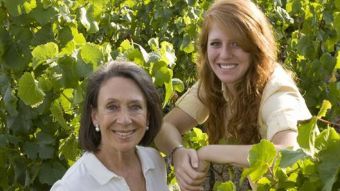Ramón Bilbao lays down roots in Rueda.
On 30 June 2017, Ramón Bilbao, the Rioja winery which will celebrate its centenary in 2024, inaugurated its spanking new winery in the Rueda D.O, destined to produce mainly high-end Verdejo and Cabernet Sauvignon wines.
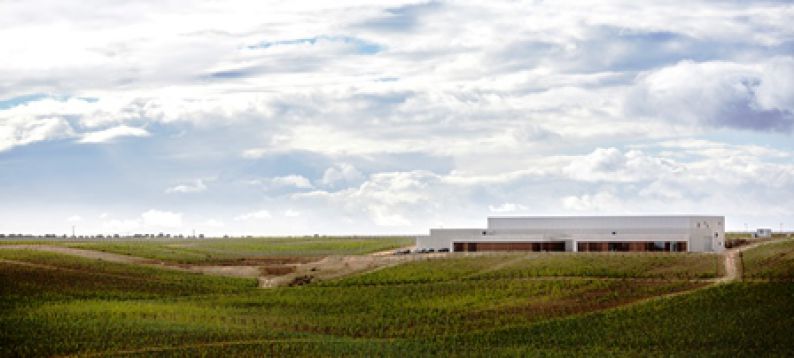
We were treated to a private tour, hosted by Sara Bañuelos, the winemaker at this new winery, and Alberto Sardón, Ramón Bilbao’s director of communication, during which they talked to us about this new business venture in some detail. Below are the facts and projects that will be of most interest to our readers.
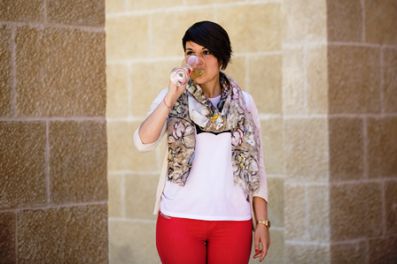 Sara is originally from Spain’s Extremadura region, but has spent much of her life in Rioja, and she is a graduate in Oenology and Technical Agricultural Engineering for the Food Industry. She spoke of Ramón Bilbao’s plans in the Rueda D.O., a new region for the Group, with passion and energy. She joined the team at the new Ramón Bilbao winery, having worked for various Rueda producers, both large and family-sized, and this has therefore exposed her to different approaches in terms of winery management and winemaking.
Sara is originally from Spain’s Extremadura region, but has spent much of her life in Rioja, and she is a graduate in Oenology and Technical Agricultural Engineering for the Food Industry. She spoke of Ramón Bilbao’s plans in the Rueda D.O., a new region for the Group, with passion and energy. She joined the team at the new Ramón Bilbao winery, having worked for various Rueda producers, both large and family-sized, and this has therefore exposed her to different approaches in terms of winery management and winemaking.
Alberto’s professional background is impressive (he worked with Miguel and Marcos Eguren for a number of years...). He joined Ramón Bilbao as he was attracted to the new venture, which included the creation of this new winery, and he has invested himself 200%. He lives by and for his work and emits knowledge and savoir-faire.
But let’s talk about the new venture itself, which is what interests us most. Until now, the grapes destined for Ramón Bilbao’s wines have been sourced from wine growers under a supply agreement (115 Ha.). But for this new venture, they have acquired a large amount of land (60 ha.), of which 5 ha. are of old Verdejo vines, planted in 1999. This will enable them to produce wine from their own grapes, in around 3 years’ time, but they will continue to work with the wine growers, according to the winery’s needs.
The construction of the winery, designed by the family’s architects, started about 2 years ago (2015). They decided not to go for a famous architect, preferring instead to invest in other necessities, such as different types of tanks, some of them latest generation, in which the wines will be made.
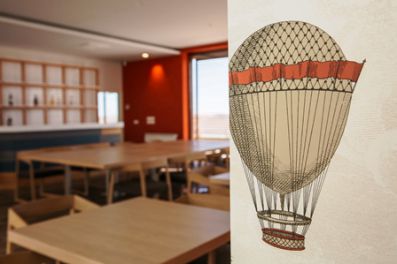 They already handled their first grape harvest in 2016, obviously using grapes from other wine growers. They brought in around one million kilos of Verdejo and Cabernet Sauvignon grapes. They will produce around 750,000 bottles of the Verdejo, which will be distributed according to demand. The company’s winemaker told us that they "consider it more appropriate to store the wine in tanks, where it evolves more slowly than if it were bottled and stored in the cellar". They will know the final number of Cabernet Sauvignon bottles, the first vintage produced, once they have bottled all the production.
They already handled their first grape harvest in 2016, obviously using grapes from other wine growers. They brought in around one million kilos of Verdejo and Cabernet Sauvignon grapes. They will produce around 750,000 bottles of the Verdejo, which will be distributed according to demand. The company’s winemaker told us that they "consider it more appropriate to store the wine in tanks, where it evolves more slowly than if it were bottled and stored in the cellar". They will know the final number of Cabernet Sauvignon bottles, the first vintage produced, once they have bottled all the production.
But this venture has something else that sets it apart from the rest of the Rueda D.O.: “we studied the terroir before planting". They carried out 77 soil trials before planting the vineyards. From these analyses, they identified two types of soil: carbonated and non-carbonated. The former retains more water than the latter, which was an important factor when deciding where to plant the Cabernet Sauvignon grape and where to plant the Verdejo. The former is planted in more humid areas, those with carbonated soil, and the latter in the drier areas, since the Verdejo grape is more accustomed to this type of terroir. Given that the area is rather dry, drip irrigation is used throughout the vineyards to prevent extreme drought (when permitted by the Rueda D.O...).
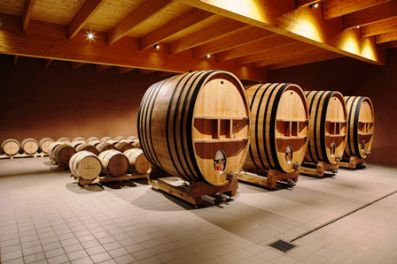 Being a new winery, they also wanted to experiment with the orientation of the vineyards and they played around with several different orientations in order to determine which was the most suitable for the two types of grape.
Being a new winery, they also wanted to experiment with the orientation of the vineyards and they played around with several different orientations in order to determine which was the most suitable for the two types of grape.
As we have already mentioned, the first harvest took place in 2016, with the grapes brought into the new winery. Harvesting is always carried out at night, due to the significant variance between day-time temperatures, which can exceed 30°C, and night-time temperatures, which can drop to around 8°C. In this way they manage to prevent oxydation and the spontaneous start of fermentation.
Although a small proportion of the harvesting is carried out by hand, 95% of it is fully mechanized. It is all about optimizing the timings, according to Sara Bañuelos, Ramón Bilbao's oenologist.
Another important consideration when building the winery was its location vis-à-vis its vineyards. It was thought that it was important that the grapes, once harvested, should be brought into the winery as quickly as possible and that the building should therefore be located in the middle of the vineyards, in the manner of a French chateaux. In this way, the furthest point of grape collection is one hour away, at most, from the point of discharge.
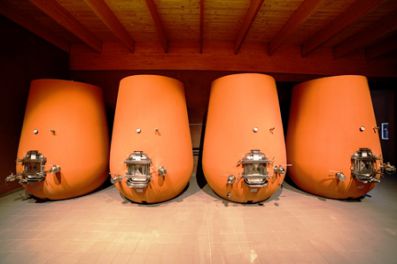 According to Sara, this winery is "a very technology-driven winery, in which the timing of the harvest is crucial. We work with different types of tanks to see how the wines develop in each of them and what these bring us." Stainless steel vats of various capacities, large 4,500 litre French oak foudres, Bordeaux barrels made of French, American and Hungarian oak, and concrete tanks. These are, as they put it, "the working tools of our winemaking activity".
According to Sara, this winery is "a very technology-driven winery, in which the timing of the harvest is crucial. We work with different types of tanks to see how the wines develop in each of them and what these bring us." Stainless steel vats of various capacities, large 4,500 litre French oak foudres, Bordeaux barrels made of French, American and Hungarian oak, and concrete tanks. These are, as they put it, "the working tools of our winemaking activity".
Sara explains that the stainless steel, "brings out more of the fruit, expresses the varietal more". Concrete "is more porous, fermentation is different and gives the wine more volume on the palate. But it's a tool that requires greater attention." Their concrete tanks differ from most of the others on the market, as they have a water system between the exterior and interior walls that serves to cool the tank and this allows them to regulate the temperature.
For the Verdejo grape, they only use stainless steel vats, "because it gives us a very specific style, which is what we want for our Verdejo." For the Cabernet Sauvignon, on the other hand, "we use the three materials and we create a blend, with a third of the wine coming from each of the different types of container”. For the time being, they want to experiment and who knows, maybe in the future, in addition to the blend, they might make a wine from each type of container?
In terms of barrels, only French and American oak barrels are used for the Cabernet Sauvignon, and these will be replaced, in principle, every two years. In contrast, for the Verdejo, they use all three types of barrels previously mentioned.
According to Alberto Sardón, "what we are looking to do is to differentiate ourselves and for this we have the tools we need".
We are sure that this is just the start of a long success story.



